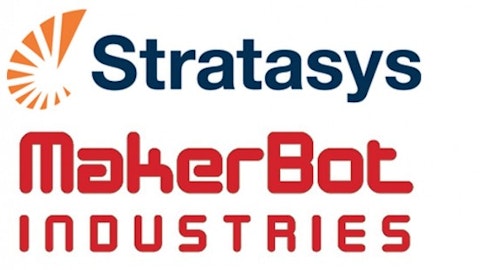
An engineer at Shapeways removes finished products from a 3-D printer. AP Photo
NEW YORK (AP) — It looks like a bakery. A warm glow emanates from the windows of big, oven-like machines, and a dusting of white powder covers everything.
This space in an anonymous building in New York’s Long Island City neighborhood, just across the river from Manhattan, isn’t cooking up breads and pastries, however. It’s a factory, filled with 3-D printers “baking” items by blasting a fine plastic dust with lasers.
When a production run is done, a cubic foot of white dust comes out of each machine. Packed inside the loose powder like dinosaur bones in sand are hundreds of unique products, from custom iPhone cases to action figures to egg cups.
Manufacturing is coming back to New York, but not in a shape anyone’s seen before. The movement to take 3-D printing into the mainstream has found a home in one of the most expensive cities in the country.

“Now technology has caught up, and we’re capable of doing manufacturing locally again,” says Peter Weijmarshausen, CEO of Shapeways, the company that runs the factory in Long Island City.
Weijmarshausen moved the company here from The Netherlands. Another company that makes 3-D printers, MakerBot, just opened a factory in Brooklyn. And in Brooklyn’s Navy Yard, where warships were once built to supply the Arsenal of Democracy, there’s a “New Lab,” which serves as a collaborative workspace for designers, engineers and 3-D printers.
3-D printers have been around for decades, used by industrial engineers to produce prototypes. In the last few years, the technology has broken out of its old niche to reach tinkerers and early technology adopters. It’s the consumerization of 3-D printing that’s found a hub in New York. The technology brings manufacturing closer to designers, which New York has in droves.
Shapeways’ production process is fairly simple. Anyone can upload a 3-D design to Shapeways’ website and submit an order to have it “printed” in plastic at the factory. The company charges based on the amount of material a design uses and then ships the final product to the customer. IPhone cases are popular, but many items are so unique they can only be identified by their designer, such as the replacement dispenser latch for a Panasonic bread maker. There’s an active group of designers who are “Bronies” — adult fans of the show My Little Pony: Friendship is Magic — who print their own ponies. The company prints in a wider range of materials, including sandstone and ceramic, at its original factory in Eindhoven, the Netherlands.
If that was all Shapeways did, the company would be little more than an outsourced machine shop. But with the help of the Internet, it’s taking the business model one step further. Anyone can set up a “shop” on the Shapeways site and let people order prints from their designs. Want a replica skeleton of a Death’s-head Hawkmoth? That’s $15. How about a full-color sandstone sculpture of actor Keanu Reeves? He’s $45.
Under the old mass production model, Weijmarshausen says, designers first need to figure out if there’s a market for their product, then raise money for production, and then find a manufacturer, who usually has to custom-make dies for molding plastic. The cost can run to tens of thousands of dollars. After that, the designer must get the product distributed and find out how customers react to it.
“With the Shapeways shop, that process is completely condensed,” Weijmarshausen says. “If there is no market for your product, then the only thing you lose is some time.”
For its part, MakerBot is spearheading another side of the 3-D printing boom by making affordable desktop 3-D printers. About the size of a microwave oven, the printers feed melted plastic out of “print heads” that move in three dimensions, gradually building objects as the plastic cools. Instead of sending a 3-D design to Shapeways, a MakerBot owner can print an object in plastic at home, as long as it’s smaller than a loaf of bread. MakerBot’s printers range in price from $2,200 to $2,800.
MakerBot’s factory is in an old industrial building on Brooklyn’s waterfront, across the street from a Costco and a strip club. Only assembly, testing and repair is done here, so the interior looks more like a workshop than a manufacturing plant. Subcontractors elsewhere do the dirty and noisy jobs like machining of components.
The privately held company agreed in June to sell itself to Stratasys, Ltd. (NASDAQ:SSYS), a maker of professional 3-D printers, for $403 million in stock. Stratasys, Ltd. (NASDAQ:SSYS) is based in Minneapolis and Rehovot, Israel, but Bre Pettis, the CEO of MakerBot, says the factory will stay in Brooklyn.



